Subtotal: 1.191,61€ (incl. VAT)
The $100 billion bet that a postindustrial US city can reinvent itself as a high-tech hub
For now, the thousand acres that may well portend a more prosperous future for Syracuse, New York, and the surrounding towns are just a nondescript expanse of scrub, overgrown grass, and trees. But on a day in late April, a small drilling rig sits at the edge of the fields, taking soil samples. It’s the first sign of construction on what could become the largest semiconductor manufacturing facility in the United States.
Spring has finally come to upstate New York after a long, gray winter. A small tent is set up. A gaggle of local politicians mill around, including the county executive and the supervisor of the town of Clay, some 15 miles north of Syracuse, where the site is located. There are a couple of local news reporters. If you look closely, the large power lines that help make this land so valuable are visible just beyond a line of trees.
Then an oversize black SUV with the suits drives up, and out steps $100 billion.
The CHIPS and Science Act, passed last year with bipartisan congressional support, was widely viewed by industry leaders and politicians as a way to secure supply chains, bolster R&D spending, and make the United States competitive again in semiconductor chip manufacturing. But it also intends, at least according to the Biden administration, to create good jobs and, ultimately, widen economic prosperity.
Now Syracuse is about to become an economic test of whether, over the next several decades, the aggressive government policies—and the massive corporate investments they spur—can both boost the country’s manufacturing prowess and revitalize regions like upstate New York. It all begins with an astonishingly expensive and complex kind of factory called a chip fab.
Micron, a maker of memory chips based in Boise, Idaho, announced last fall that it plans to build up to four of these fabs, each costing roughly $25 billion, at the Clay site over the next 20 years. And on this April day, standing under the tent, CEO Sanjay Mehrotra conjures a vision for what the $100 billion investment will mean: “Imagine this site, which has nothing on it today, will have four major buildings 20 years from now. And each of these buildings will be the size of 10 football fields, so a total of 40 football fields worth of clean-room space.” The fabs will create 50,000 jobs in the region over time, including 9,000 at Micron, he has pledged—“so this is really going to be a major transformation for the community.”
For any city, a $100 billion corporate investment is a big deal, but for Syracuse, it promises a reversal of fortune. Sitting at the northeast corner of the Rust Belt, Syracuse has been losing jobs and people for decades as its core manufacturing facilities shut down—first GE and more recently Carrier, which once employed some 7,000 workers at its East Syracuse plant.
According to Census data, Syracuse now has the highest child poverty rate among large US cities; it has the second-highest rate of families living on less than $10,000 a year.
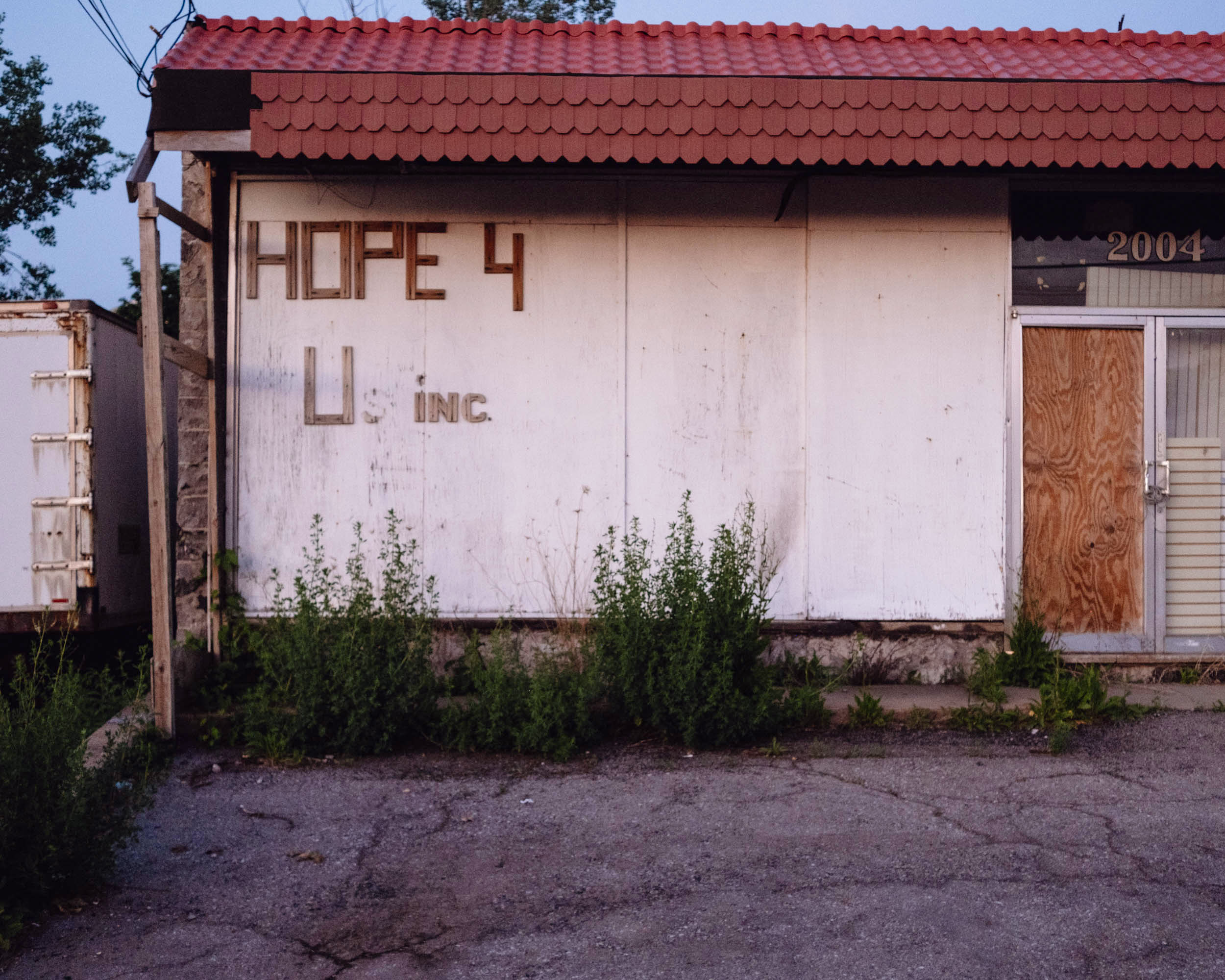
KATE WARREN
Syracuse, of course, is not alone in its postindustrial malaise. The nation’s economy is increasingly driven by high-tech industries, and those jobs and the resulting wealth are largely concentrated in a few cities; Boston, San Francisco, San Jose, Seattle, and San Diego accounted for more than 90% of US innovation-sector growth from 2005 to 2017, according to a report by the Brookings Institution. Without these high-tech jobs and with conventional manufacturing long gone as an economic driver, Rust Belt cities like Detroit, Cleveland, Syracuse, and nearby Rochester now top the list of the country’s poorest cities.
The Micron investment will flood billions into the local economy, making it possible to finally upgrade the infrastructure, housing, and schools. It will also, if all goes according to plan, anchor a new semiconductor manufacturing hub in central New York at a time when the demand for chips, especially the type of memory chips that Micron plans to make in Clay, is expected to explode given the essential role they play in artificial intelligence and other data-driven applications.
It is, in short, an attempt to turn around a region that has struggled economically for decades. And the project’s success or failure will be an important indicator of whether the US can leverage investments in high tech to reverse years of soaring geographic inequality and all the social and political unrest that it has brewed.
Billions for fabs
In many ways, the Micron investment is an on-the-ground trial for the recent US embrace of industrial policy—government interventions that favor particular sectors and regions of the country. Over the last two years, the US government has allocated hundreds of billions to supporting everything from new chip fabs to a slew of battery manufacturing plants throughout the country. Micron, for one, says it would not be building in the US without the funding it expects from the CHIPS and Science Act, which designated $39 billion for support of domestic semiconductor manufacturing and another $13.2 billion for semiconductor R&D and workforce development.
While semiconductors were invented in the US, these days it fabricates only about 12% of the global supply; Taiwan and South Korea dominate the market. For DRAM (dynamic random-access memory) chips, the kind that Micron plans to build in Syracuse, the state of domestic manufacturing is particularly bad. Fewer than 2% of DRAM chips are made in the US. Even US-headquartered Micron, which is one of three companies that control the DRAM market, makes most of its chips in Taiwan, Japan, and Singapore.
It costs roughly 40% more to make chips in the US than in Asia, owing to differences in construction and labor costs and government incentives. The money in the CHIPS Act is meant to make it financially attractive to build fabs in the US once again.
Some of that money is going to places where chip manufacturing is well established: Taiwan Semiconductor Manufacturing Company (TSMC) is investing $40 billion in new fabs in Phoenix, Arizona, and Intel is building fabs in nearby Chandler. But other projects, including a $20 billion pair Intel is building near Columbus, Ohio and Micron’s project in Syracuse, will break ground on new locations for chip manufacturing, potentially creating centers of economic activity around the large investments.
The intention of the CHIPS Act, says Mark Muro, a senior fellow at Brookings, is not just to support building “a big box” to make semiconductors but to help create regional economic clusters around the investments. After years of growing inequality between different parts of the country, he says, this strategy reflects a renewed emphasis on so-called placed-based economic policies to support the local development of high-tech manufacturing.
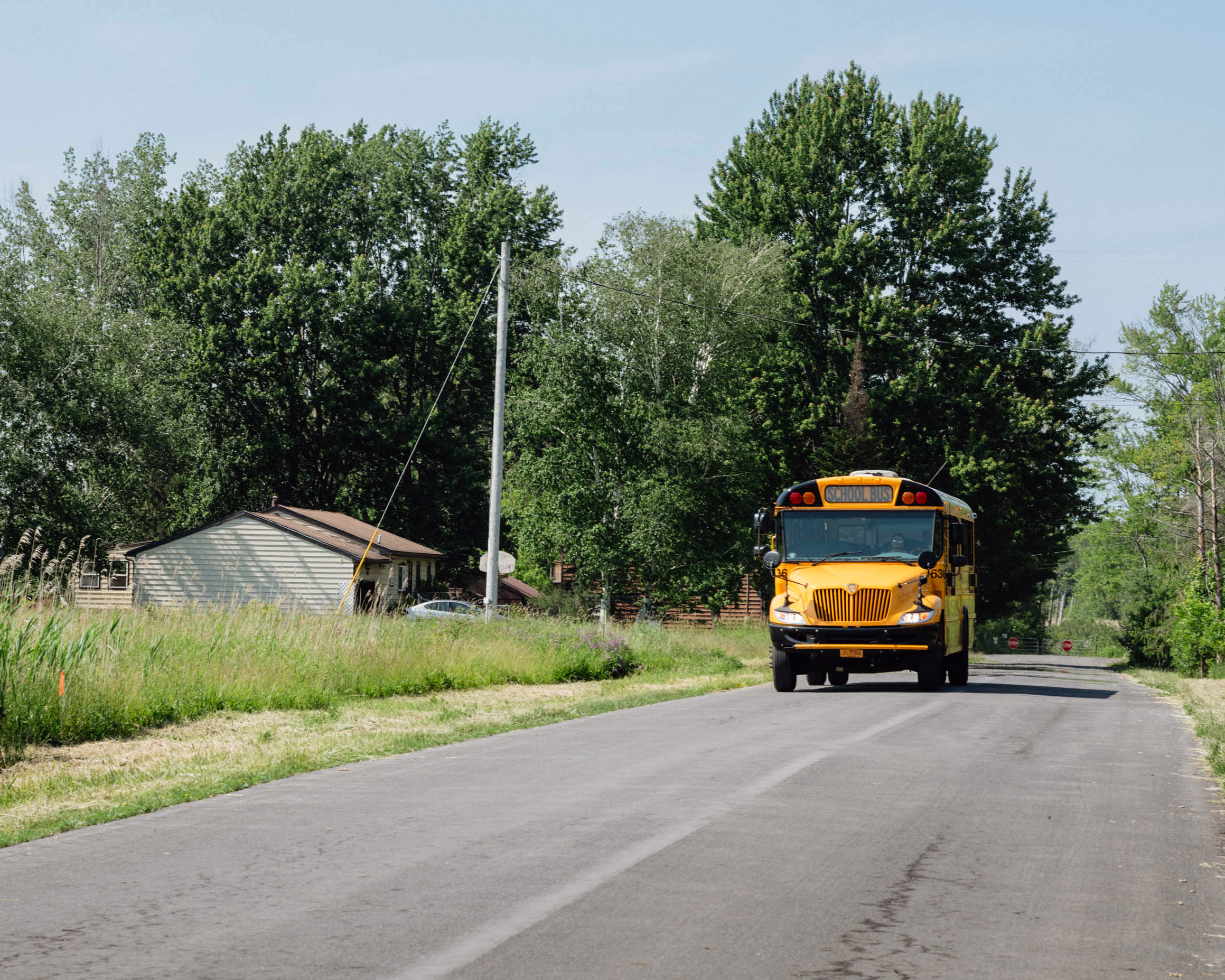
KATE WARREN
Predictably, states are aggressively competing for the investments; New York attracted Micron with a staggering $5.8 billion in economic development incentives. But the billions of dollars flowing into Syracuse come with uncertainty. Will this lead to sustainable economic transformation? Or will the massive amounts of money simply provide a temporary burst of growth and jobs for some, leaving many in the community behind and causing a severe case of buyer’s remorse for the city and state?
The incentives that were offered to lure Micron represent “a wild, wild amount of money,” says Nathan Jensen, a professor of government at the University of Texas in Austin.
While the Micron investment will likely bring good jobs and could be a great opportunity for a distressed city, he says, local and state leaders will need to manage multiple risks over the long term. Corporate strategies can change, and 20 years is a long time to bet on growing market demand for a specific technology. What’s more, says Jensen, by offering generous tax breaks to companies, state and local communities can limit their sources of revenues in the coming decades, even as—if all goes well—they deal with booming demand for housing, roads, and schools. He calls it the “winner’s curse.”
The challenge for Syracuse is that there are no “hard-and-fast recipes” for how to get it right, says Maryann Feldman, a professor of public policy at Arizona State University. “We think like we have an economic development sausage machine,” she says. “You line up a bunch of factors and, voilà, you have a productive and growing economy. It’s much more difficult than that.”
Risky business
When Ryan McMahon became county executive of Onondaga County, in 2018, the long-imagined industrial park in Clay was languishing. Previous county executives had promoted it as the perfect location for a semiconductor fab. But for two decades there had been no takers. McMahon decided to go all in, pouring millions into expanding and upgrading the site.
His timing couldn’t have been better. Even before the CHIPS Act was passed last summer, semiconductor manufacturers had begun scouting sites in the US to expand. TSMC and Intel both sniffed around Clay, says McMahon, before choosing other sites. Preliminary talks began with Micron, but it all depended on whether the act got passed.
Once that happened, the Micron deal was done. In late October, President Biden went to Syracuse to celebrate what he called “one of the most significant investments in American history.”
The business of memory chips, such as the DRAM chips that Micron will make in Clay, is a notoriously competitive one with very low margins. Like their more glamorous cousins, the logic chips made by Intel and TSMC, they are immensely complex and expensive to make: the process involves cramming billions of transistors onto each thumb-size chip with a precision of a few atoms. To survive, companies have to run their fabs continuously, with remarkable efficiency and yields.
The technical and market demands make finding a suitable site difficult. Micron says it chose the site in Clay because of its size, access to clean power, and abundance of water (by some estimates, large chip fabs use up to 10 million gallons a day). The transmission lines running through it draw power from a huge hydroelectric plant at Niagara Falls and nuclear plants on Lake Ontario. And the lake, with its nearly endless supply of water, is less than 30 miles away.
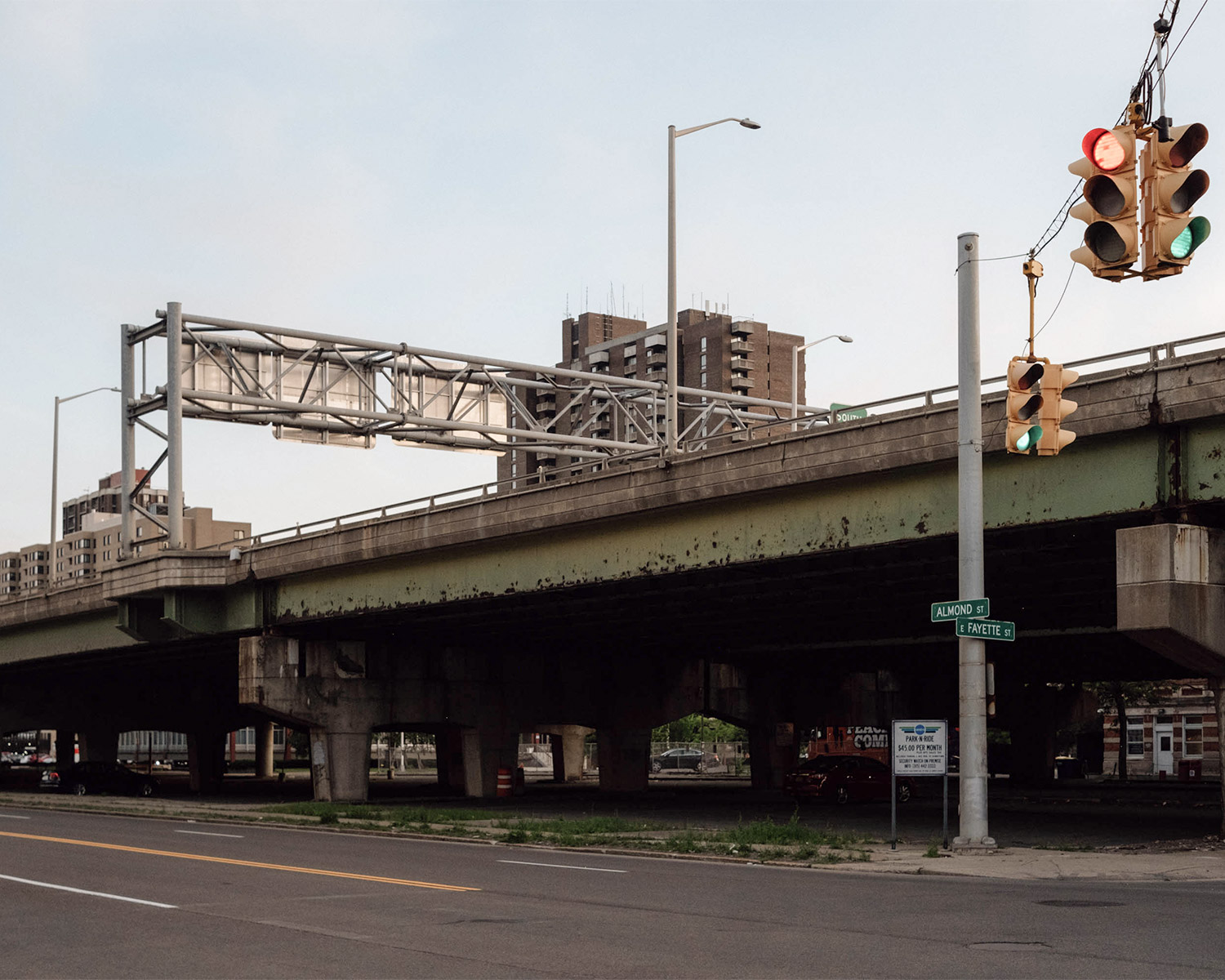
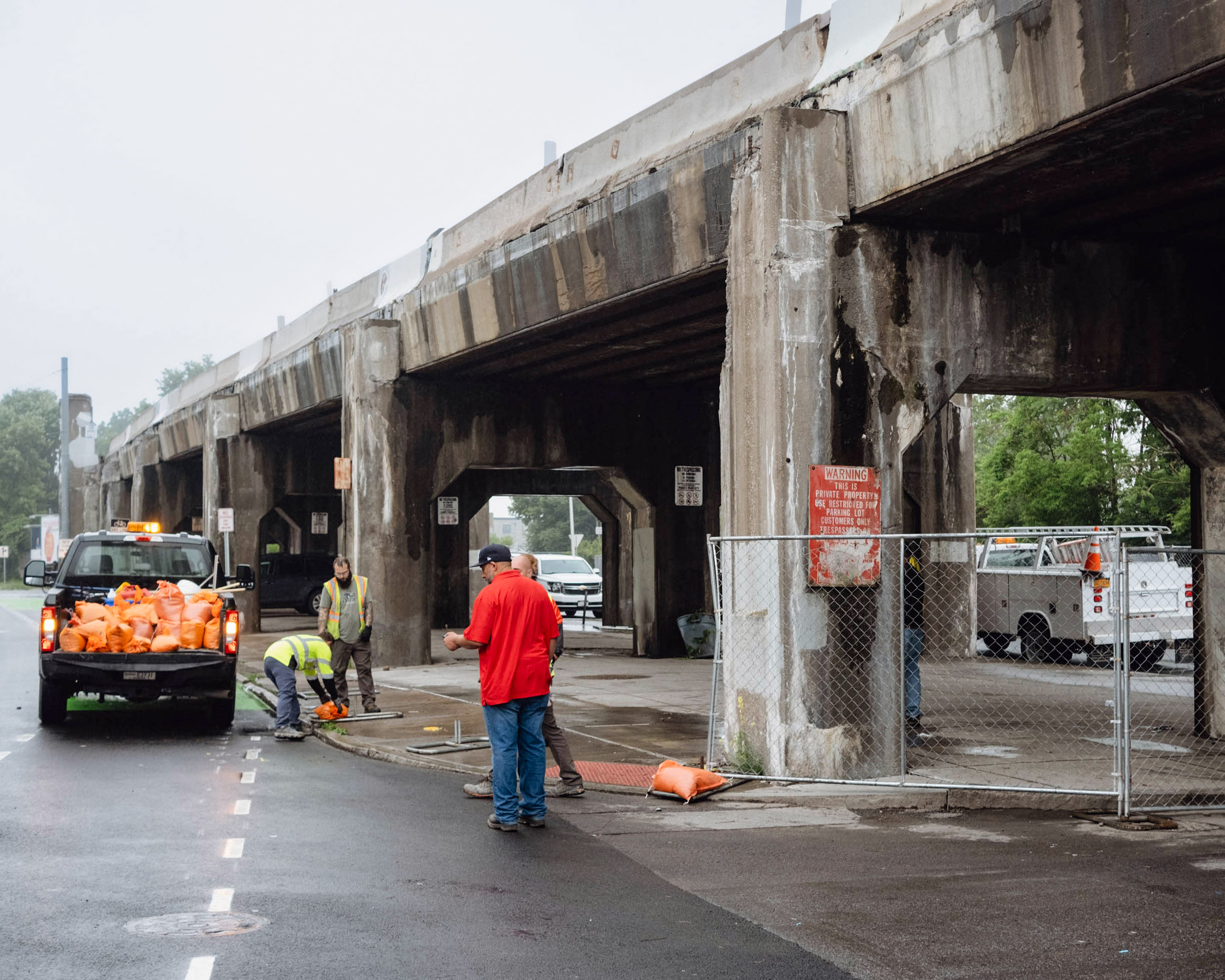
The Micron investment, including the $250 million the company has committed to a community fund, could help the city repair its crumbling infrastructure.
“There are very few sites, frankly, in the country that were ready on our timeline,” says Manish Bhatia, Micron’s executive vice president of global operations. Bhatia also points to the area’s manufacturing legacy, which despite being “hollowed out over the last 20 years” has left a “tremendous pool of engineering talent.” Throw in the generous incentives from the state and the company was sold, he says.
Micron’s ambitious expansion plans for the next few decades are fueled in part by anticipated demand from artificial intelligence, as well as increased use of memory in automotive applications and data centers. “AI is all about memory,” says Bhatia. “It needs larger and larger data sets to be able to glean the insights.” And more data means more memory.
Construction of the first fab is scheduled to begin in 2024, but it won’t be expected to come fully online until the latter half of the decade. Further expansion is planned but will depend on the demand for the memory chips. Another fab could begin operations by the mid-2030s; after that, two more fabs are on the table, if the market allows.
Micron projects that it will eventually hire 9,000 people to work at the fabs, with roughly 3,000 of those jobs needed for its initial build-out. And it says as many as 41,000 additional jobs will be created in other businesses, from companies supplying the fabs with materials and maintenance to restaurants meeting the needs of the growing workforce.
The fabs will require workers with a wide range of skill sets, from electrical engineers to a roughly equal number of technicians without college degrees but with specialized training. That means large investments in the area’s vocational schools, community colleges, and universities.
In response to the Micron investment, Syracuse University plans to expand funding for its College of Engineering and Computer Science by 50% over the next five years or so. While some graduates will surely go to work at Micron, the goal is more broadly to train people with a wide range of skills and expertise, from materials science to automation, in hopes that the investment in the fabs will seed a booming local high-tech community.
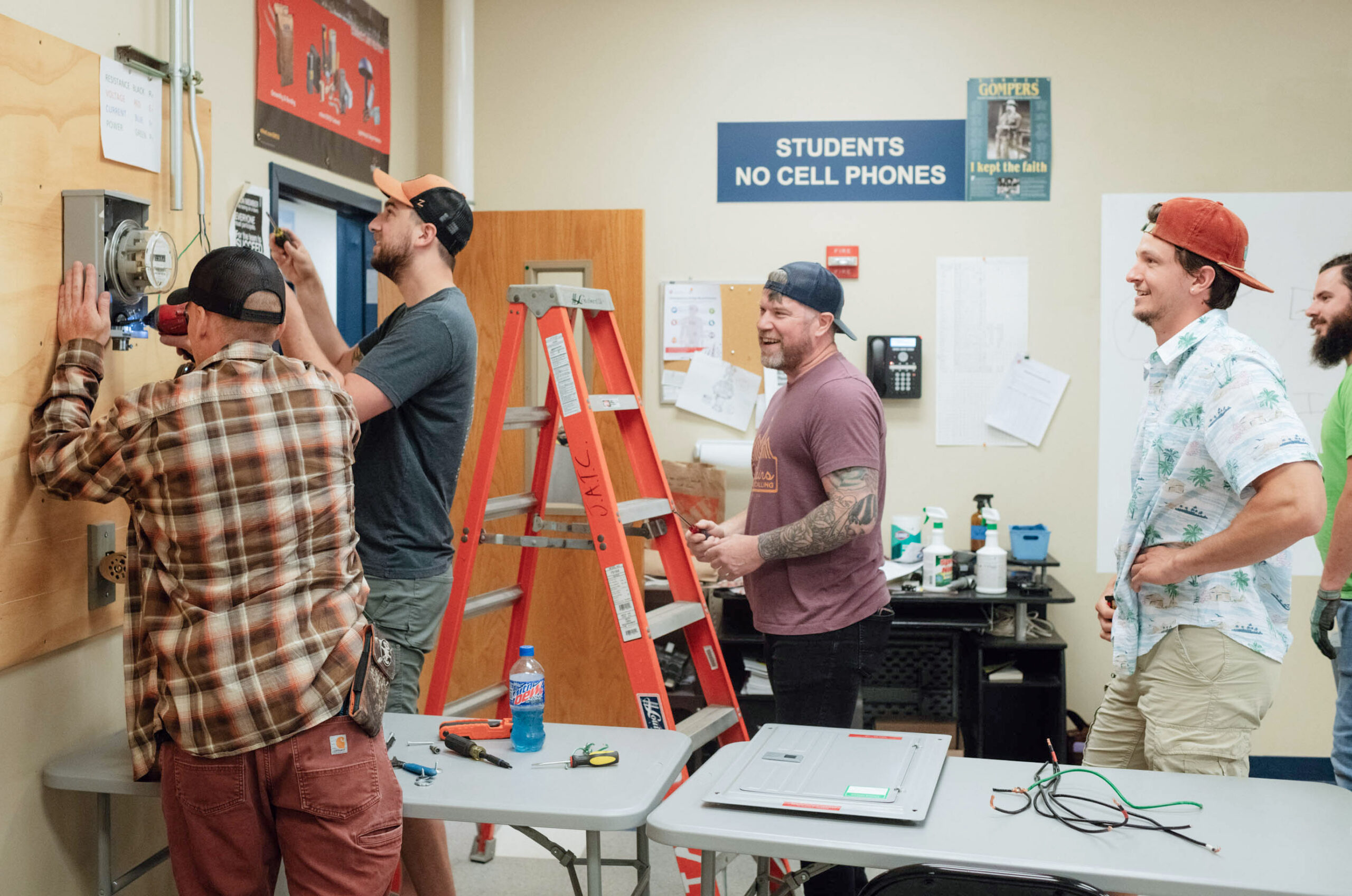
KATE WARREN
“This is a fascinating natural experiment,” says Mike Haynie, vice chancellor for strategic initiatives and innovation at Syracuse University. “Industry left here largely 25 years ago, and the economy, to a large extent, has been sustained by health care and colleges—it’s essentially what’s driven the economy.” Now, says Haynie, “all of a sudden you insert this $100 billion high-tech investment into the regional economy and see what happens.”
Until now, he says, “we have not been able to authentically look an engineering or computer science student in the face and say, ‘There’s a reason for you to stay in central New York.’”
Going bad
If Syracuse and the surrounding towns want a lesson on how not to do economic development, they just need to drive 150 miles down the thruway to Buffalo.
In 2012, Governor Andrew Cuomo announced the Buffalo Billion, an ambitious redevelopment initiative intended to revive the distressed city. The star project in the Buffalo Billion was an effort to create a clean-tech hub by spending $750 million to build and equip a massive manufacturing facility for SolarCity, a Silicon Valley–based company that financed and installed solar panels.
SolarCity promised it would produce a gigawatt of solar panels by 2017, creating 3,000 jobs in the city, including 1,500 manufacturing jobs at the plant. The so-called gigafactory would be the largest solar panel manufacturer in the Western Hemisphere, the company boasted.
In the late spring of 2015, I visited SolarCity’s plant as it was being built at the so-called Riverbend site, once the location of a sprawling plant operated by Republic Steel. Less than four miles away from the city’s revitalized downtown waterfront, it seemed like the perfect place to center a new manufacturing economy for Buffalo.
“The Buffalo Billion has been a failure with a capital F.”
Jim Heaney
The following years turned out to be pretty much a bust for the solar gigafactory. With SolarCity several billion dollars in debt, Tesla Motors bought the company. Amid much fanfare, Elon Musk, its CEO, announced it would make solar roof tiles—a product others had tried but that had never really caught on. They turned out to be more or less a market flop. Panasonic, which Tesla had originally brought into the plant to help make solar cells at the facility, pulled out in 2020.
Today, Tesla does in fact employs some 1,500 people at the facility, but many don’t work in solar manufacturing, according to local media reports. Rather, many of the jobs involve assembling charging stations for Tesla’s cars and annotating traffic scenes to help train the autonomous features in its vehicles. Without the anticipated boom in solar panel production—the promise of being the largest solar manufacturer in the US is long forgotten—there are few new jobs for suppliers and other companies that expected to support a growing center of manufacturing.
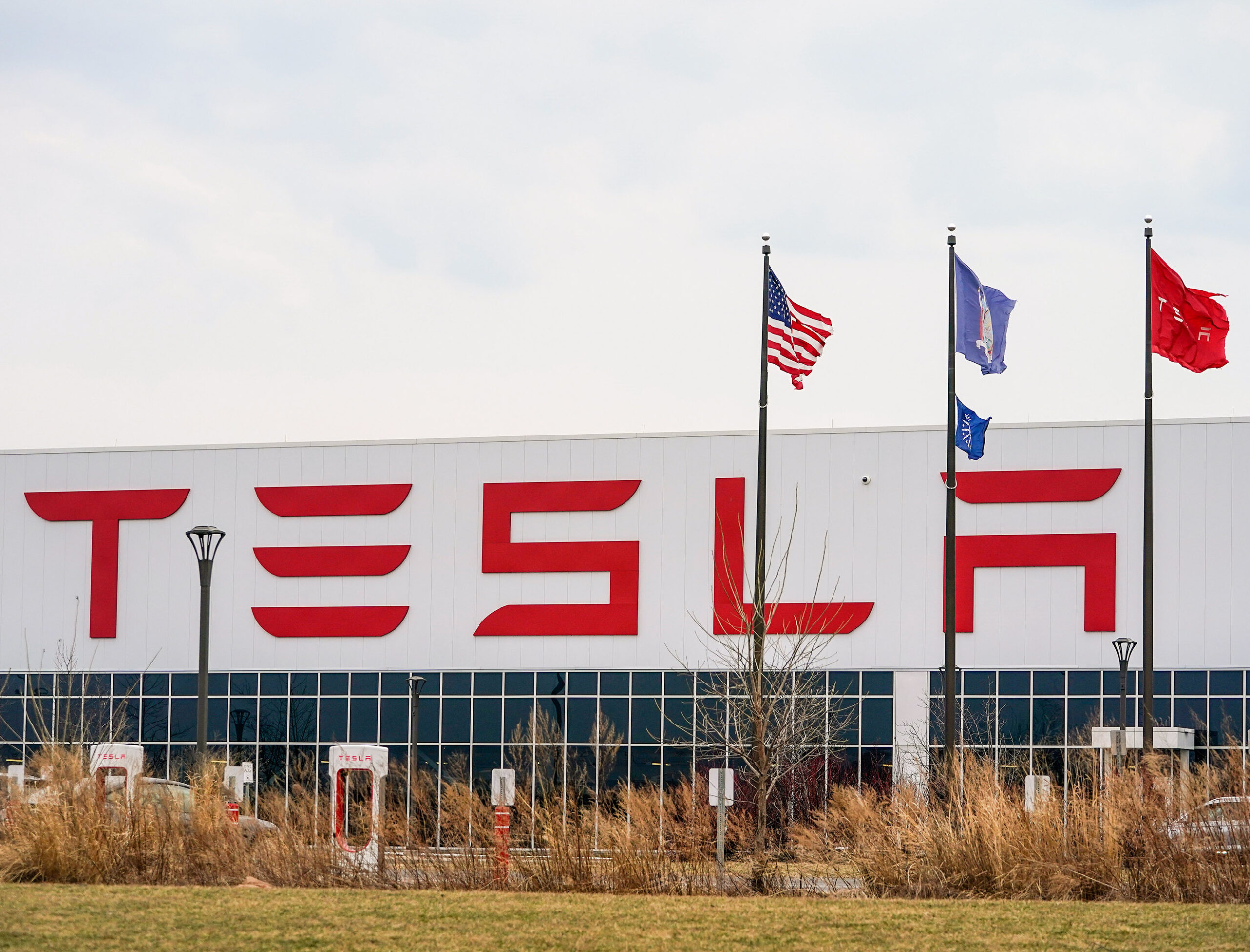
AP PHOTO/FRANK FRANKLIN II
“The Buffalo Billion has been a failure with a capital F,” says Jim Heaney, editor of the Investigative Post in Buffalo, who has followed the state initiative from its outset. The booming tech hub that the Buffalo Billion was explicitly chartered to create never materialized. Heaney points out that the only apparent spinoff from the investments at the Riverbend site is the Tim Hortons doughnut shop across the street.
In many ways, the plans for the Buffalo Billion violated Economic Development 101. For one thing, SolarCity, which was meant to be the clean-tech manufacturing anchor, was a company that installed residential solar panels; it had little experience in large-scale manufacturing.
There were broader questions about the state investment. Why build in Buffalo, which has no apparent supply chain for the technology and little local demand for it? (It’s one of the cloudiest cities in the country.) Where was the workforce with the skills to produce solar panels going to come from?
The key lesson of the Buffalo Billion is not that the solar gigafactory was a waste of taxpayer money, though it probably was, but that government-funded economic policy needs to be done in a way that respects a region’s resources and talents.
Richard Deitz, an economist at the Federal Reserve Bank of New York who is based in Buffalo, contrasts the strategy with the investments the state had previously made in Albany. There, the money went into a nanotech research center and to support an existing semiconductor industry; it created partnerships between businesses, higher education, and the state and local governments. The investments strengthened an existing cluster of expertise around those resources.
“These were very different approaches, and I’d say the one in Buffalo did not work very well,” he says.
Will the Micron investment change the economic trajectory of upstate New York? It’s the right question, says Deitz, “but I don’t think anybody can tell you the answer.”
However, he says he’s encouraged by what’s happened in Albany over the past 10 years. “You get a picture of what’s possible,” he says. From 2010 to 2020, Albany added some 4,000 jobs, while Buffalo lost some 25,000, according to Deitz: “It’s not like [Albany is] growing like gangbusters, but it’s doing quite well and it’s reinventing itself.”
Winning the lottery
The initial injection of money from Micron will inevitably create high-tech jobs and will have what economists like to call a “multiplier effect” as those workers spend their generous salaries at local businesses. But the real, sustainable payoff, says Enrico Moretti, an economist at the University of California, Berkeley, will come if the fabs trigger the creation of a cluster of companies that result in a flourishing of new innovation activities and brings long-term high-tech growth beyond Micron.
Ten years ago, Moretti wrote a book called The New Geography of Jobs showing how the rise of such so-called innovation clusters in a few areas of the US, mostly along the coasts, has led to deep economic inequalities. (Those disparities, Moretti now says, have only gotten worse and more troubling since he wrote the book.) “Innovative industries bring ‘good jobs’ and high salaries to communities,” he wrote. They deliver a far stronger multiplier effect than other employers, even those in manufacturing. But communities without innovation clusters, he wrote, “find it hard to create one” and fall further and further behind.
The trick for Syracuse is not to try to be another Silicon Valley (a well-known list of others have failed at that fool’s errand) or even another Austin, but to use its resources and skills to define its own unique brand of innovation.
Think Albany but on a far grander scale.
To demonstrate how important these high-tech clusters are to productivity growth, Moretti recently showed what happened to innovation in Rochester after the fortunes of Kodak began to decline in the late 1960s. The company had helped make Rochester one of the country’s wealthiest cities during the 20th century—but then came the invention of digital photography. Kodak’s business, which by then centered on selling film rather than making cameras, collapsed.
As Moretti documented, the damage to the city was not just the loss of Kodak jobs, but a parallel collapse of its ability to invent new technologies. He found that even non-Kodak inventors, who had nothing to do with the photography business, also became far less productive—as measured by number of patents—after Kodak’s decline. The benefits of a flourishing community of innovators interacting with each other, as well as the legal and financial services that facilitate startups and entrepreneurs, had seemingly left town with Kodak.
Now Syracuse wants to run what happened to Rochester in reverse, hoping a large corporate presence will kick-start its own innovation cluster around semiconductors.
“Syracuse has won the economic development lottery,” says Dan Breznitz, a professor of innovation studies at the University of Toronto. Besides the size of the investment, Micron has a long-term track record in chip manufacturing and commitment to building its own production capacity. But, Breznitz suggests, the community now needs a pragmatic vision for what the region and its economy will look like in 15 to 20 years, aside from the Micron fabs.
Having won the lottery, he says, the community and local businesses can say either “We don’t need to worry anymore” or “This is our moment to create a local vision of how we can become an important location for the global semiconductor industry or related industries.”
Shared prosperity?
When I spoke to Kevin Younis in late April, he appeared to be fully aware that he and Syracuse had won the lottery. As chief operating officer of Empire State Development, the agency responsible for promoting economic growth, Younis had helped lead the effort to recruit Micron. Now, sitting outside on the patio of a bustling downtown food market that he had chosen for the meeting, he basked in the recent revival of the city and its potential prospects.
Younis grew up a mile away, and he says the city has slowly been rebounding in recent years. “When I was a kid in the ’80s and for sure in the ’90s, the downtown was emptying out. I would come down with friends to go to the comic-book store, and we’d be the only people down here,” he says. Now, on a late Thursday afternoon, the market, which has kiosks serving food from all over the world, is busy with young families, businesspeople, and 20-somethings grabbing a beer after work.
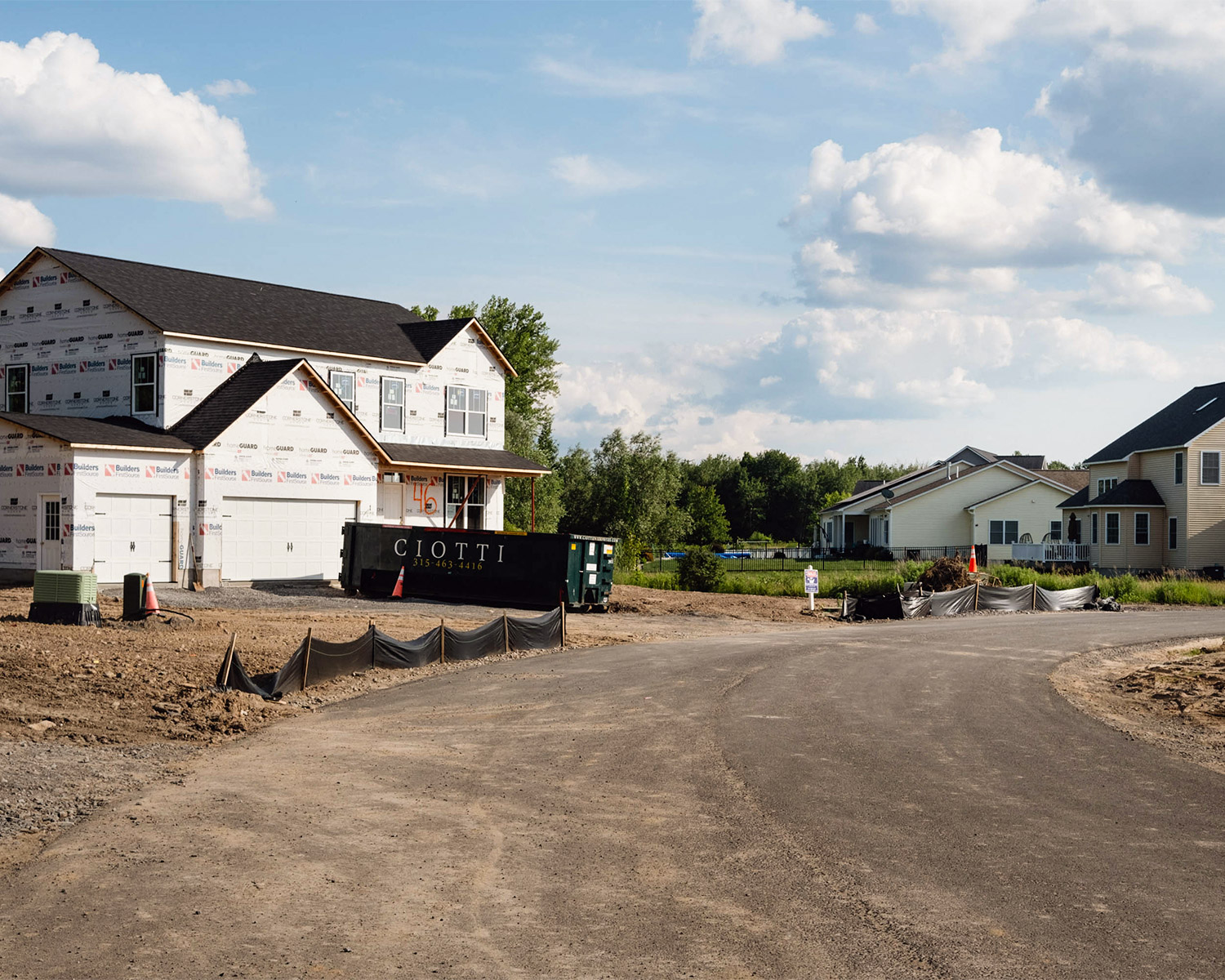

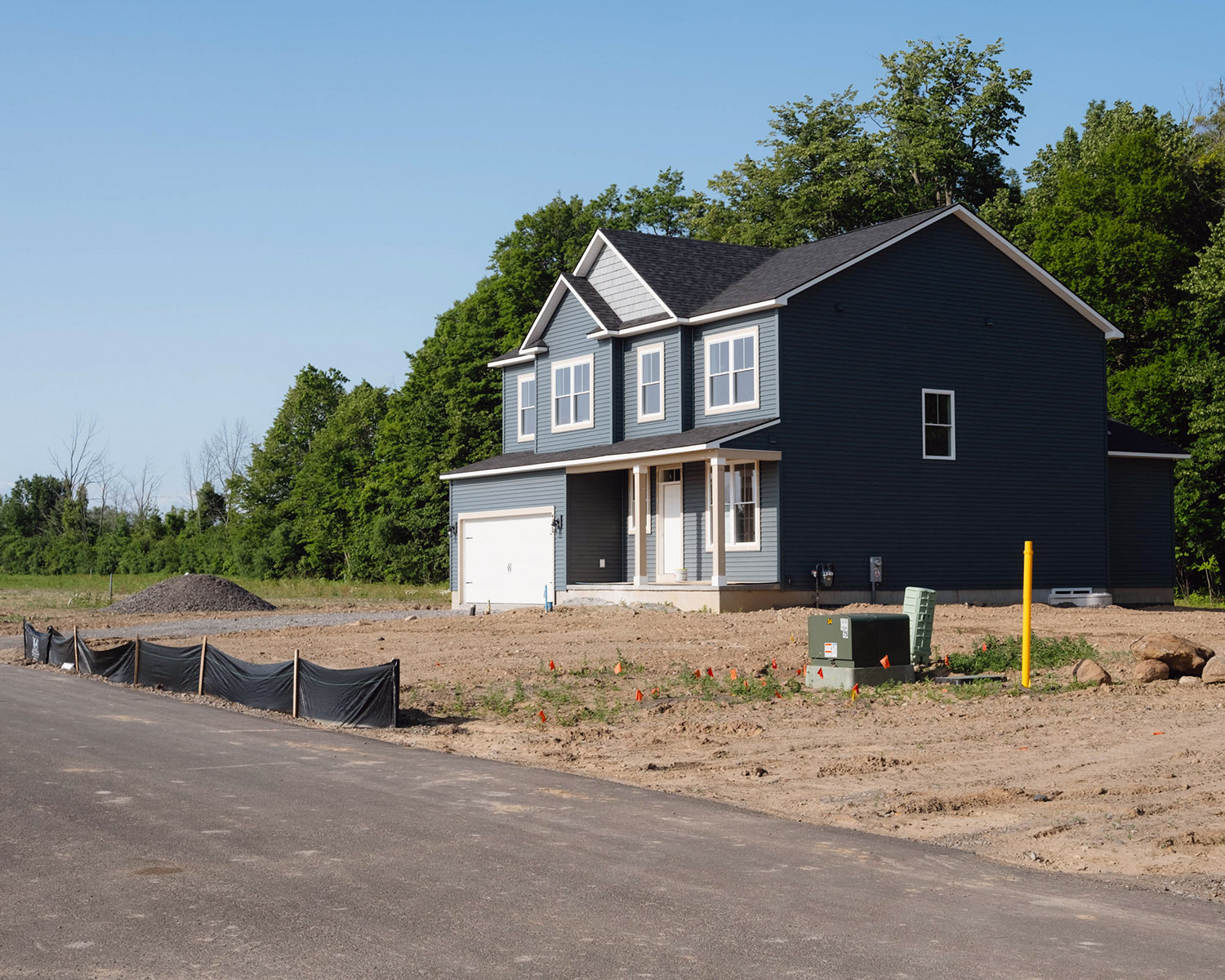
New homes for sale. Hopes are high that the Micron facility will help the local real estate market take off.
But it’s that lottery ticket that Younis knows could change everything, helping a city that has been crawling its way back to reach or exceed its old success. Beyond the $100 billion to build the fabs, there is another $70 billion in operational costs, meaning $170 billion that will be spent in central New York over the next 20 years. “It is something like a $15-billion-a-year GDP impact in central New York on average over the next 30 years,” says Younis. (The GDP of the Syracuse metro area is roughly $42 billion now, according to the Federal Reserve Bank of New York.) And that, he says, is probably a conservative estimate.
Younis, however, is definitely not the type of person who wins the lottery and sits around without any worries. “A lot of things keep me up at night,” he admits. Housing. Infrastructure. “Nobody has ever done anything like this at this scale,” he says.
The state is trying to be strategic, he says, pointing to the plan announced earlier this year to open its first Office of Semiconductor Expansion, Management, and Integration. And when he talks about the existing expertise in the region around smart sensors, drones, and automation, one can see the clear threads of the type of strategic vision that the University of Toronto’s Breznitz talks about.
“A lot of things keep me up at night. Nobody has ever done anything like this at this scale.”
Kevin Younis
But there is another challenge on Younis’s mind these days, one that feels very personal. It goes back to growing up as one of 12 children in a working-class Syracuse family. “Central New York has among the most entrenched poverty in the nation. Having grown up in that poverty and having an opportunity to change that is a generational opportunity,” he says.
Poverty is all around, he says: “It’s where we’re at—it’s right here. It’s where I grew up. These are among the poorest Census tracts in the nation. Imagine living and raising a family on less than $10,000 a year. That’s insane! That’s what keeps me up at night, where I would feel like I failed if we don’t do something about that.”

KATE WARREN
Perhaps the ultimate test of the Syracuse experiment will be whether, in addition to boosting the opportunities in the largely middle-class suburbs around Clay, the Micron investment also lifts up those living in poverty in the downtown Syracuse neighborhoods that Younis talks about. Can the inevitable economic growth benefit a broad swath of the community? Or will it exacerbate inequality? The results in other booming innovation clusters are not particularly encouraging. Can Syracuse be different?
Robert Simpson, president of the CenterState Corporation for Economic Opportunity and a close collaborator with Younis in recruiting Micron, puts the challenge this way: “Economic growth is no guarantee of a greater measure of shared prosperity. You can grow without improving the quality of life for a lot of people in the region. However, economic growth is a necessary precondition for a greater level of shared prosperity. You need growth—otherwise you’re just redistributing income and wealth from one place to the next. And that gets people understandably upset and nervous.”
The massive Micron investment, says Simpson, “gives us a chance to do something we have wanted to do for a long time, but we didn’t have the tools to do: bridge the socioeconomic divides that have held our region back.”
It’s a lofty goal that will no doubt be challenged over the coming years. There will be inevitable fights over housing and where and how to invest the hundreds of millions earmarked for community development. There will certainly continue to be skeptics, especially given the state’s hugely generous incentives and the number of years it will take to get the fabs fully up and running.
Transforming a city and its economy is not easy work. It comes with enormous risks. But in many ways, Syracuse has no choice. The great experiment unfolding there is one that the city—indeed, the country—badly needs to succeed.




